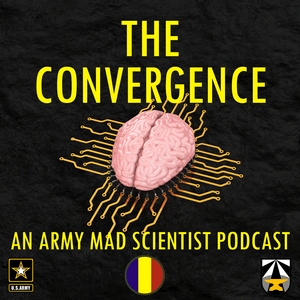114. Data to Dominance: AI & Gaming to Create Decision Advantage with Jon Pan
“Agentic warfare is here, whether we welcome it or not. The era of military planners manually gathering limited data and compiling static crisis response options on briefing slides is over. In the next few years, the defense community will see the emergence of AI agents representing military planners, logisticians, intelligence officers, and operators that harness centuries of stored experience in real-time digital collaboration, generating uniquely effective crisis solutions for human decision-makers in seconds…. First-mover advantage in leveraging this capability will not merely ensure battlefield dominance — it will be overwhelmingly decisive at every level of warfare. It could herald the dawn of a new defense paradigm, supplanting the outdated defense-industrial complex with an agile, AI-driven agentic base. The stakes could not be higher….” — Agentic Warfare Is Here. Will America Be the First Mover? War on the Rocks, 23 April 2025.
[Editor’s Note: The article cited above predicts that agentic capabilities — i.e., those Artificial Intelligence (AI) systems that can operate independently, making decisions and executing actions without constant human supervision — when “employed by [our] adversaries… will dramatically outperform traditional Western paradigms of 24- to 72-hour decision cycles and wartime initiative.” While not specifically using the term “agentic warfare,” today’s The Convergence podcast features Jonathan Pan describing how this capability could accelerate the Army’s Military Decision Making Process (MDMP), enabling us to achieve decision advantage and fight at machine speed — Enjoy!]
Jonathan Pan is the co-founder and CEO of Exia Labs, a defense technology startup. Exia’s products include Blue, an Army brigade decision support tool, and Recon, an Intelligence Preparation of the Operational Environment Artificial Intelligence (AI) agent. Prior to founding Exia, Mr. Pan was Senior Director of Product Management at the innovation unit of Walmart, where he led AI projects focused on shopping search and immersive shopping. He also led product and content teams at Amazon, Meta, and Riot Games, and served as an advisor for the SXSW Conference Internet and Gaming tracks between 2017 – 2022.
Prior to joining industry, Mr. Pan served in the U.S. Army, beginning his career as a platoon leader in the 2nd Infantry Division in the Republic of Korea. He deployed to Afghanistan as part of 5th Stryker Brigade Combat Team, 2nd Infantry Division. After leaving active duty, he briefly served in the New York Army National Guard’s 1st Battalion, 69th Infantry Regiment. His awards and decorations include the Bronze Star Medal, the Combat Infantryman Badge, the Expert Infantryman Badge, and the Parachutist Badge. He continues his service in the Army as a civilian Army Reserve Ambassador for the state of Washington, where he focuses on increasing awareness of the United States Army Reserve among local communities, civic leaders, and state legislators, with the goal of enhancing support for the Army Reserve, its personnel, and their families.
Mr. Pan is also a Visiting Fellow at the Hoover Institution, Stanford University, where he conducts research on the intersection of artificial intelligence and wargames. He has a Master of Business Administration from Ne...


